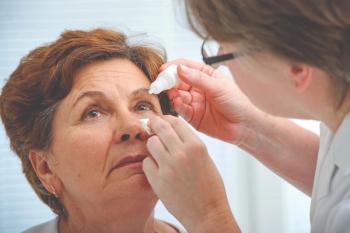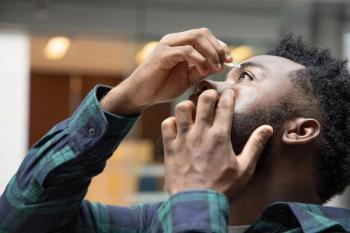
Impact of Presbyopia on Mechanism of Ocular Accommodation
Drs Andrew S. Morgenstern and Francis S. Mah provide insight on the functionality of ocular accommodation as an autofocus lens and how this is affected in patients with presbyopia.
Episodes in this series

Barry Eiden, OD, FAAO, FSLS: For background, Andy, describe how the near-focusing system in the eye works.
Andrew S. Morgenstern, OD, FAAO, FNAP: I’ll try to keep it as simple as possible. It’s a complex system in the eye. We always teach our student optometrists—externs, residents—and our patients that the eye is an extension of the brain. All the visual information coming in and going out is processed by the brain. This is a processing issue. But mechanically, inside the eye, we have a few mechanisms going on.
First, we have the crystalline lens. The crystalline lens, when we’re young, is an auto-focus lens. When we get that visual stimulation into the eye, into the brain, the brain tells the lens how much power to focus, so we can bring things into focus. A good example of that is when you wake up in the morning. You look at your alarm clock, and it takes you 3 or 4 seconds to adjust, just like an auto-focus camera would. But something else is going on because the lens and the accommodative ability, the focusing ability, is linked to an aperture in our eye called the pupil. You can’t separate the 2 actions from going on. Actually, there are 3 actions going on because the eyes are turning in to help us read. All of those mechanics inside the eye, stimulated by the brain, are how our focusing system works. Unfortunately, as we age, things change. But that’s basically how it works.
Barry Eiden, OD, FAAO, FSLS: Dr Mah, why don’t you share with us what happens as we age? What happens to this wonderful and complex system?
Francis S. Mah, MD: There’s still a little controversy as far as what exactly is happening with presbyopia or the loss of accommodation. Andy went through an excellent but very simplified description of it. It’s very complex, and that was an excellent simplification of it. There are a couple of thoughts as far as what’s happening with the loss of accommodation. There are 2 theories. The main theory most people accept is the Helmholtz theory. Essentially, the lens itself is an auto-focus lens. As we age—the process starts on the day we’re born—the lens slowly loses its flexibility. We don’t notice that loss of flexibility when we’re distance corrected until around 40 or 50 years old, when our arms aren’t long enough to hold that item we’re trying to read or look at from far enough away. That’s the main theory.
The other theory is the fact that the lens is becoming larger in addition to becoming stiffer. Although the ciliary body is moving, contracting, and relaxing, and the lens may still be a little flexible, it’s so large that the ciliary body can’t move enough to have that little remaining flexibility left over to cause accommodation.
Transcript edited for clarity
Newsletter
Want more insights like this? Subscribe to Optometry Times and get clinical pearls and practice tips delivered straight to your inbox.














































.png)


